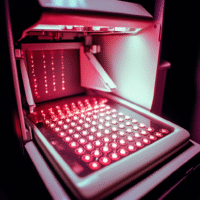Clinical trials
-
Improving Diabetes Outcomes in Chinese Americans: Insights from the CARE Program
Understanding the CARE Program Results The CARE program was designed to help Chinese Americans with type 2 diabetes (T2D) manage their condition better. This study looked at how well the program worked in several areas, including: Self-efficacy: This means how confident participants felt about managing their diabetes. Self-care activities: This includes the actions participants took […] ➡️➡️➡️
-
SBRT vs. Chemoradiation: Improving Outcomes in Borderline Resectable Pancreatic Cancer
Understanding the Study Results This study looked at two different treatments for patients with pancreatic cancer that is hard to remove by surgery. The treatments were: Stereotactic Body Radiation Therapy (SBRT): A precise type of radiation therapy. Chemoradiation (CRT): A combination of chemotherapy and radiation therapy. What Worked? Patients who received SBRT had better chances […] ➡️➡️➡️
-
Long-Term Efficacy of MGX, IPL+MGX, and LipiFlow for Severe Meibomian Gland Dysfunction
Understanding the Trial Results This study looked at three treatments for severe Meibomian Gland Dysfunction (MGD) in Chinese patients: manual meibomian gland expression (MGX), intense pulsed light combined with MGX (IPL+MGX), and LipiFlow. Here’s what the findings mean for patients and clinics. What Worked? All three treatments improved symptoms of MGD, helping patients feel better. […] ➡️➡️➡️
-
Prognostic Value of On-Treatment mGPS in Hepatocellular Carcinoma with Atezolizumab and Bevacizumab
Main Findings from the Study This study looked at how a specific scoring system, the modified Glasgow Prognostic Score (mGPS), can help doctors understand how patients with liver cancer (hepatocellular carcinoma) might respond to treatment with two drugs: atezolizumab and bevacizumab. What Worked? The mGPS proved to be an effective tool in predicting patient survival. […] ➡️➡️➡️
-
Identifying Factors for Successful Problem-Solving Training in Dementia Caregivers
Understanding the Trial Results What Worked? The Problem-Solving Training/Descubriendo Soluciones Juntos (PST/DSJ) program helped many caregivers feel less burdened and less depressed. About 60% of caregivers showed meaningful improvements after participating in this program. What Didn’t Work? Some caregivers did not show improvement. The study found that personal factors like age, gender, or education did […] ➡️➡️➡️
-
Enhancing Colorectal Cancer Recovery: Benefits of Traditional Chinese Medicine and Group Psychotherapy
Understanding the Trial Results This study looked at how traditional Chinese medicine (TCM) and online group therapy can help people who have survived colorectal cancer (CRC). Here’s what we found: What Worked? Improved Health: Patients reported feeling better both physically and mentally. Changed Perspectives: Many patients changed their outlook on life and made positive changes […] ➡️➡️➡️
-
Short-term Personalized Vestibular Rehabilitation: Effective Strategies for Acute Peripheral Vestibular Syndrome
Understanding the Study Results This study looked at how effective a personalized rehabilitation program is for patients with acute peripheral vestibular syndrome (APVS), which causes dizziness and balance issues. The key findings were: What Worked: The short-term personalized vestibular rehabilitation (ST-PVR) helped improve dizziness and balance in patients within just six weeks. Most patients showed […] ➡️➡️➡️
-
“Effective Habituation Training for Reducing Motion Sickness in College Students”
Understanding the Trial Results This study looked at how two different training programs can help college students who experience motion sickness (feeling sick when moving) and visually induced motion sickness (feeling sick from visual movements). The goal was to see if these programs could make them feel better. What Worked? Both training programs helped reduce […] ➡️➡️➡️
-
Enhancing Cognitive Reappraisal Skills in the Unified Protocol for Emotional Disorders
Understanding the Study Results This research looked at how a method called cognitive reappraisal works within a therapy called the Unified Protocol (UP). This therapy is used to help people with various emotional disorders, like anxiety and depression. What Worked? The UP helped improve cognitive reappraisal skills. This means patients learned to manage their thoughts […] ➡️➡️➡️
-
Quadratus Lumborum Block vs. Thoracic Paravertebral Block for Pain Management in Laparoscopic Nephrectomy
Understanding the Study This study looked at two ways to manage pain after a specific surgery called laparoscopic nephrectomy, which is the removal of a kidney using small cuts. The two methods compared were: Anterior Quadratus Lumborum Block (QLB-LSAL): A new technique that targets a specific area in the lower back. Thoracic Paravertebral Block (TPVB): […] ➡️➡️➡️
-
Promising Efficacy of Zanubrutinib-Enhanced R-CHOP in Non-GCB DLBCL: A Phase II Study Insights
Understanding the Trial Results This study looked at a new treatment for patients with a type of lymphoma called non-germinal center B-cell-like diffuse large B-cell lymphoma (non-GCB DLBCL). This type of lymphoma often does not respond well to the usual treatment. What Worked? The new treatment, called ZR2-CHOP, includes three drugs: zanubrutinib, lenalidomide, and the […] ➡️➡️➡️
-
Intrapulpal Cryoanesthesia: Enhancing Pain Management in Root Canal Treatments
Understanding the Trial Results This study looked at how cooling the anesthetic solution before giving a dental injection affects pain during root canal treatment. The goal was to see if using a colder anesthetic could make the procedure more comfortable for patients. What Worked? Both the cold anesthetic (cryoanesthesia) and the room-temperature anesthetic reduced pain […] ➡️➡️➡️
-
Efficacy of Mobile Digital Therapeutics for Managing Temporomandibular Disorders in Adults
Understanding the Trial Results for Temporomandibular Disorders (TMD) What Was This Study About? This study looked at a new mobile app designed to help people with Temporomandibular Disorders (TMD), which cause pain and problems with jaw movement. The app aimed to reduce pain and improve daily life for those affected by TMD. What Worked? The […] ➡️➡️➡️
-
Maximizing Aesthetic Outcomes in Class III Deformities: Anterior vs. Whole Maxilla Clockwise Rotation
Understanding the Study Results This study looked at two methods for fixing facial issues related to a Class Ⅲ maxillofacial deformity, which is when the lower jaw is too far forward compared to the upper jaw. The goal was to see which method better improves the appearance around the nose and mouth. What Worked? The […] ➡️➡️➡️
-
Kinesiotaping and Physical Therapy: Effective Relief for Migraine-Related Neck Pain
Understanding the Study Results This study looked at how kinesiotaping (KT) combined with physical therapy (PT) can help people who have migraines and neck pain. The researchers wanted to see if this combination could reduce pain, improve quality of life, and help with daily activities. What Worked? Less Pain: Patients who received KT along with […] ➡️➡️➡️
-
Brexpiprazole: A Promising Treatment for Schizophrenia and Substance Use Disorder
Study Overview This study looked at how a medication called brexpiprazole can help people with both schizophrenia and substance use problems. It lasted for 12 weeks and involved two groups of patients: one group switched to brexpiprazole, while the other group continued with their usual treatment. Main Findings Substance Use and Craving: The group using […] ➡️➡️➡️
-
Combination Therapy for RVO-ME: Superior Outcomes with Ranibizumab and Dexamethasone
Understanding the Study This study looked at two treatments for a condition called macular edema, which can happen after a blockage in the eye’s blood vessels. The researchers wanted to see if using a combination of two medicines—ranibizumab and a dexamethasone implant—was better than using ranibizumab alone. What Worked? The combination treatment showed better improvement […] ➡️➡️➡️
-
Oxycodone vs Sufentanil: Optimizing Postoperative Recovery in Obese Bariatric Surgery Patients
Understanding the Study This study looked at two pain relief medications, oxycodone and sufentanil, for obese patients after they had weight-loss surgery. The goal was to see which medication helped patients recover better. What the Study Found Oxycodone Worked Better: Patients who received oxycodone reported feeling better overall compared to those who received sufentanil. They […] ➡️➡️➡️
-
Probiotic L. crispatus M247 Enhances HPV Clearance and Vaginal Health in Women
Understanding the Trial Results This study looked at a treatment using a probiotic called L. crispatus M247 to help women clear high-risk HPV (HR-HPV) infections. Here’s what the results showed: What Worked: The probiotic treatment helped 60% of women clear the HPV infection compared to only 31.8% in those who did not receive the treatment. […] ➡️➡️➡️
-
Melatonin Reduces Cardiovascular Risk Factors in Peritoneal Dialysis Patients: A Clinical Trial Summary
Understanding the Study Results This study looked at how melatonin can help patients on peritoneal dialysis (PD) by reducing certain health risks. Here’s what we found: What Worked? Melatonin Reduced Harmful Substances: Patients who took 5 mg of melatonin each night for 10 weeks showed lower levels of malondialdehyde (MDA), high-sensitivity C-reactive protein (hs-CRP), soluble […] ➡️➡️➡️
















